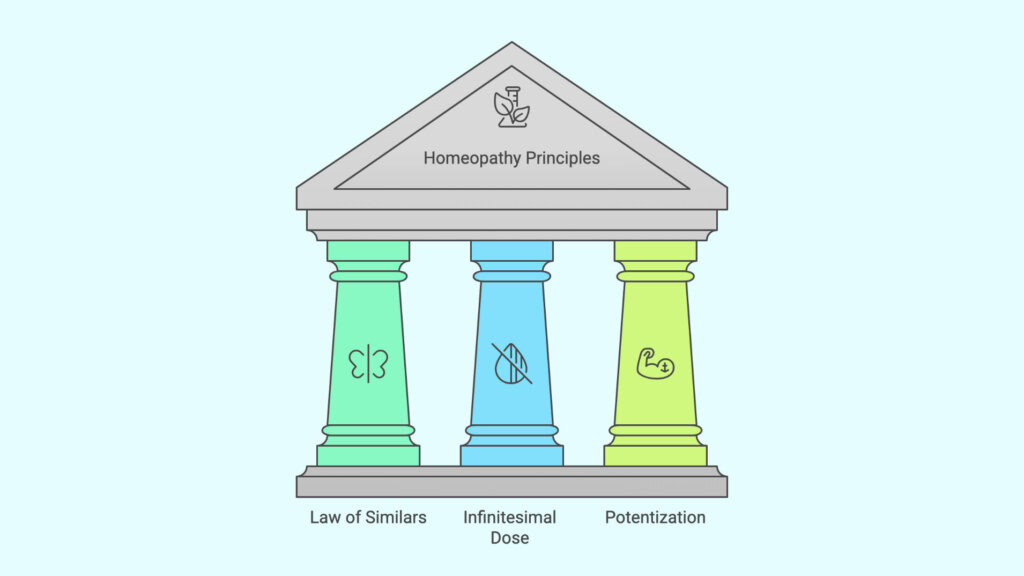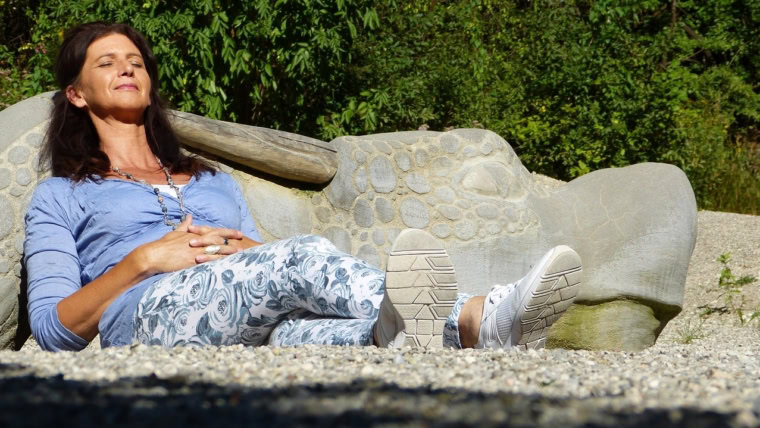In a world that often equates healing with force, stronger drugs, harsher interventions, faster results, there exists a different path. One that works with the body instead of against it. One that honors the subtle intelligence of our system. One that has been quietly practiced for over 250 years across more than 100 countries by over 200 million people: Homeopathy.
But what makes homeopathy so unique, and often misunderstood?
To answer this, we need to return to its roots and the three core principles that define it.

1. The Law of Similars: Like Cures Like
Imagine your body as a finely tuned violin. Each organ, tissue, and nerve is a string. When one string is out of tune, the whole instrument suffers. Do we forcefully tighten it back? Or do we gently bring it into harmony?
Homeopathy follows this latter principle. The “law of similars” says that a substance which produces symptoms in a healthy person can help treat those same symptoms in a sick person. It doesn’t suppress symptoms, it listens to them. It nudges the body to respond, recalibrate, and heal from within.
This concept has ancient roots. Even Aristotle and Paracelsus mentioned it. But it was Samuel Hahnemann, a multilingual German doctor and chemist, who crystallized this idea into a coherent and powerful system of healing after experimenting with the chinchona bark, used to treat malaria, and experiencing its symptoms himself.
2. The Infinitesimal Dose: Less Is More
Here’s where many people get stuck: How can such tiny doses have such a big effect?
It’s a fair question. Homeopathy uses incredibly small amounts of a substance, so small they often defy conventional biochemical logic. But that’s exactly the point.
Healing doesn’t always require force. Think of a child on a swing: a gentle nudge, delivered at the right time and direction, sets it in motion. The same is true for the body.
Because of this, homeopathic remedies are non-toxic and safe for everyone, including babies, pregnant women, animals, and even plants. (Yes, studies exist showing efficacy in plants, hard to explain as placebo.)
3. Potentization: The Healing Power Hidden in the Invisible
Homeopathy doesn’t just dilute. It potentizes, a process of sequential dilution combined with vigorous shaking (succussion) that’s believed to activate the energetic or informational essence of the substance.
This is not magic. Research in fields like water memory, championed by Nobel laureate Luc Montagnier, has shown that water can store and transmit information. That means a substance doesn’t need to be present in bulk to leave an imprint on the body.
Potentization allows remedies to work not only on the physical level but also on emotional and mental planes. It’s a science, but also an art, one that respects the body’s wholeness and complexity.
A System That Sees the Whole You
Homeopathy doesn’t reduce you to symptoms or diagnose you through fragmented parts. It looks at you as a living, breathing system. It asks: What’s out of balance? What are your unique patterns? What deeper story is your body trying to tell?
It addresses:
- The root causes of illness, not just surface symptoms
- The interconnectedness of body, mind, and emotions
- The individuality of each person, rather than applying a one-size-fits-all solution
When practiced classically and carefully, homeopathy becomes more than a natural remedy. It becomes a philosophy of healing that honors the intelligence of your body and your story.
The Invitation
In a time when many people are feeling over-medicated, burnt out, and disconnected from their bodies, homeopathy offers something rare: a return to listening, to gentleness, to trust in the body’s own wisdom.
And for those ready to heal from the inside out, it can be transformative.
Prefer listening?
You can watch the video version of this article here:



